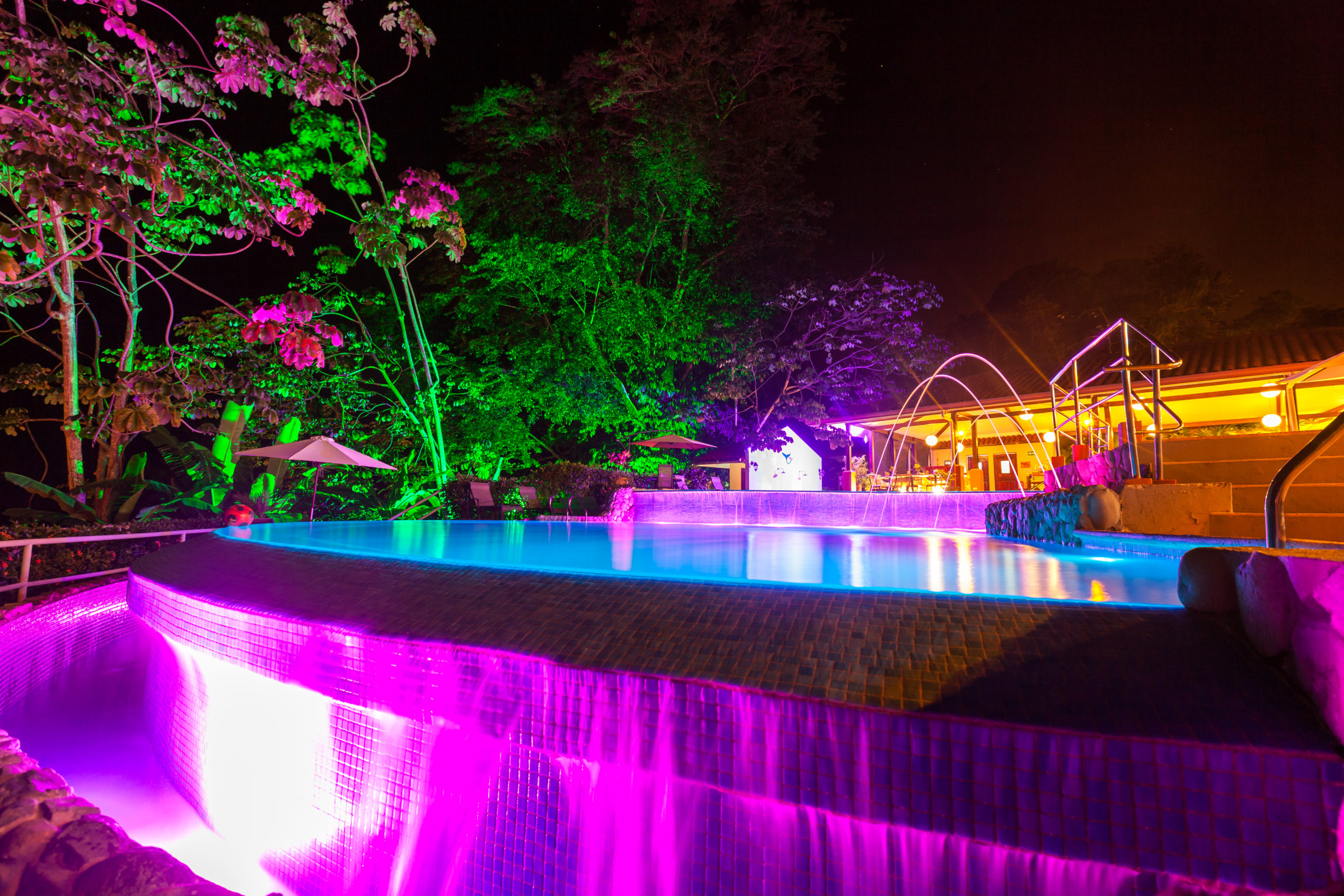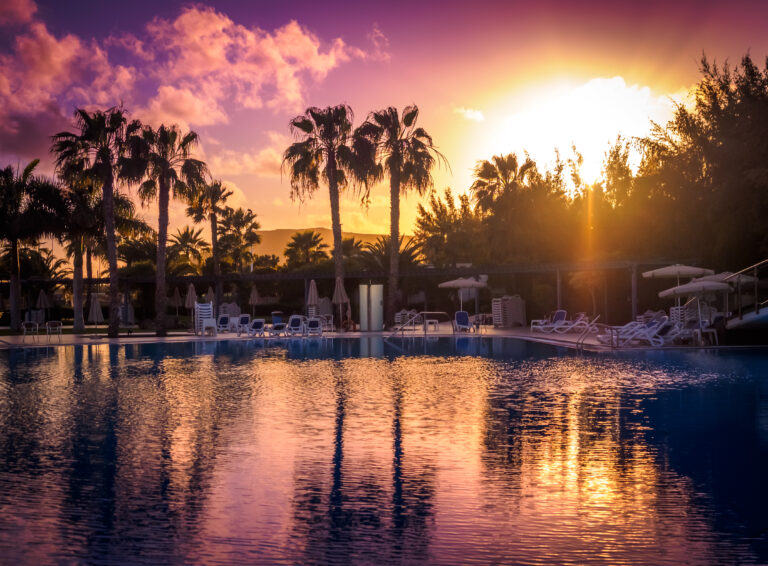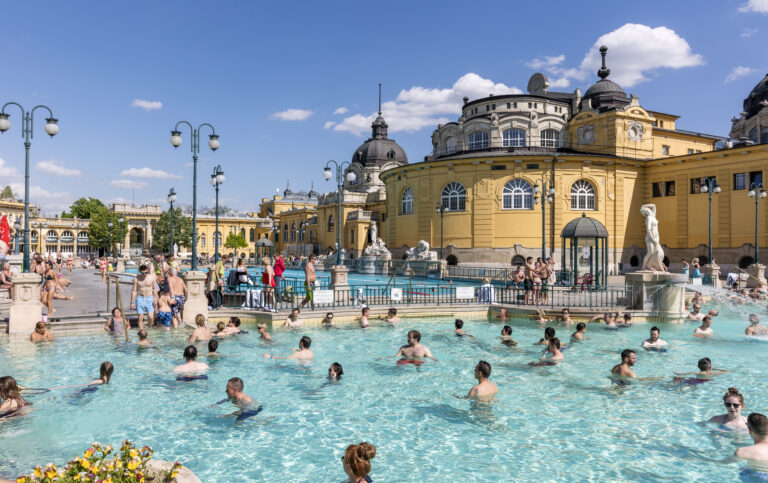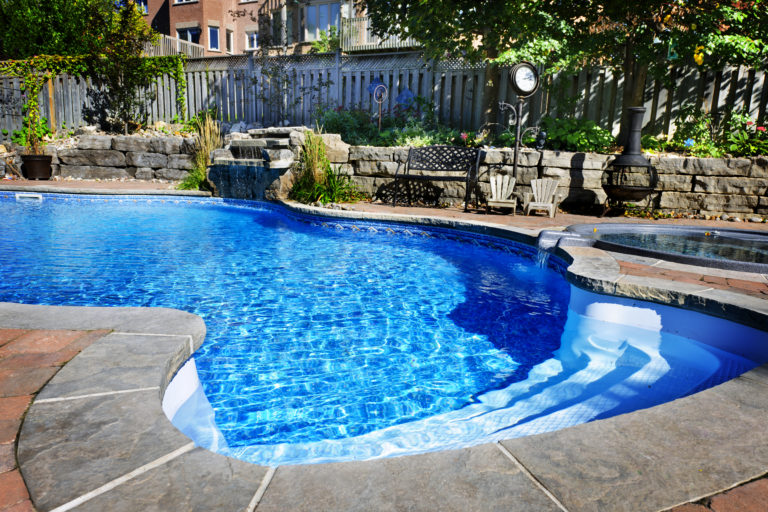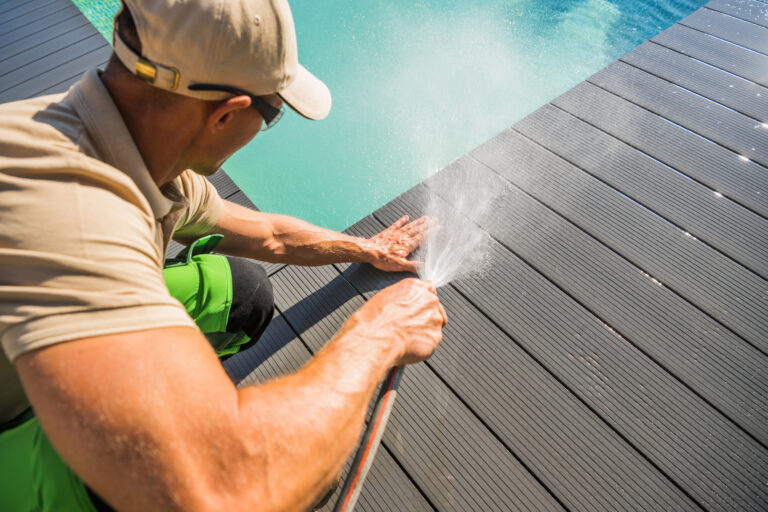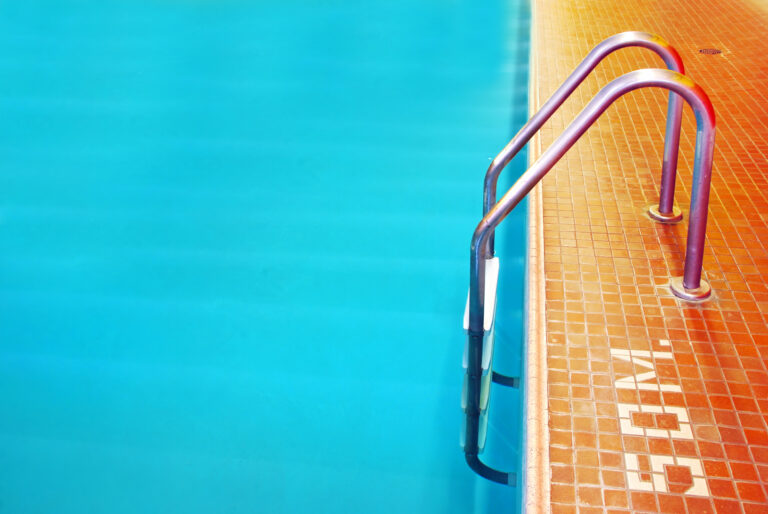The Impact of Color Choices in Pool Design
You’re planning your dream pool and color choice is key. But did you know it’s not just about aesthetics? In this article, we’ll delve into the psychology of color in pool design, how it impacts the overall look, practical considerations, and common mistakes.
You’ll see case studies of successful designs and learn about future trends. Let’s ensure you’re making an informed decision for your perfect oasis.
Understanding the Psychology of Color in Pool Design
You’ve got to realize that your choice of color in pool design isn’t just about aesthetics; it’s also deeply connected to psychology. Color symbolism in pools plays a big role in how you and others perceive the space.
For instance, blue is often chosen for its calming and serene effects. But have you ever thought about why? Blue, as a symbol of water itself, reflects serenity and tranquility. It’s like bringing a piece of the ocean into your backyard. If peace and relaxation are what you’re after, then blue might be your go-to color.
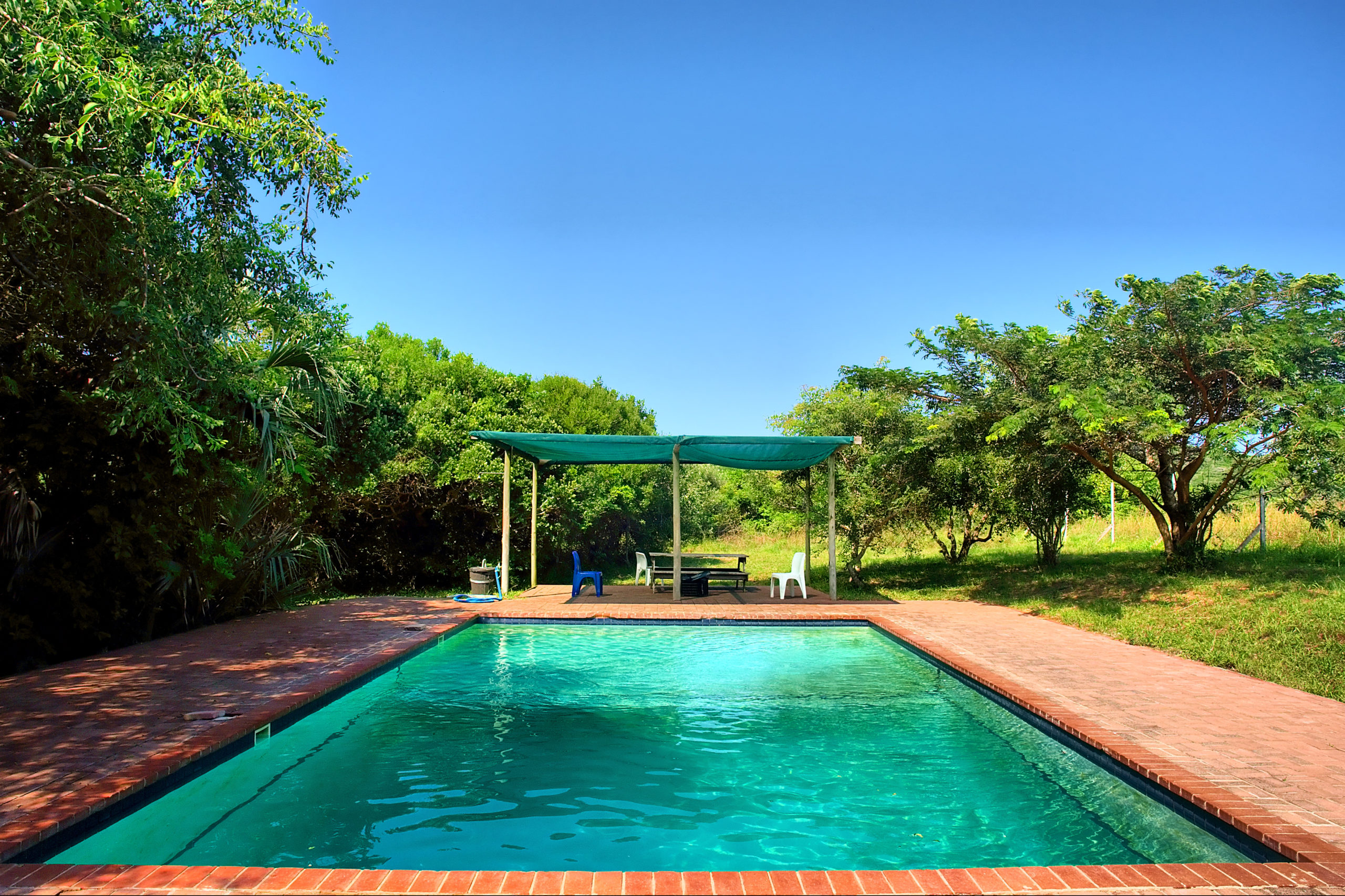
But let’s not forget cultural color preferences either! Different cultures associate various colors with diverse feelings or qualities. In some cultures, green means luck while others see it as a sign of prosperity or fertility. So if you’re designing a pool for international clientele or want to incorporate elements from different cultures into your design, consider these preferences.
And remember – don’t get too caught up on trends! Your pool should reflect who you are and what you value most. After all, it’s more than just a body of water; it’s an extension of your personal style and tastes.
The Influence of Color on Pool Aesthetics
You’ve understood the impact of color choices in pool design, now let’s dive a bit deeper.
Consider how color perception influences the overall aesthetics of your pool and how the colors you choose can significantly affect your mood.
We’ll guide you through this process, shedding light on factors to consider when choosing pool colors, and demonstrating how different hues can create varying atmospheres.
Color Perception in Pools
It’s crucial to understand how color perception can drastically alter the appearance and feeling of a pool. Consider the role of color durability in pools.
Over time, sunlight and chemicals can fade or discolor your pool’s surface, altering its original look. You want a color that withstands these elements to maintain its vibrancy.
Another key factor is the impact of lighting on pool colors. Depending on the type and intensity of light, your chosen hue may appear differently at various times of day or under artificial lighting at night.
For instance, soft white lights might enhance warm shades while cool LED lights could make blue tones pop more.
So when deciding on your pool’s color scheme, remember it’s not just about aesthetics but also longevity and adaptability to different light conditions.
Choosing Pool Colors
Selecting the right shades for your swimming area isn’t just about aesthetics; it’s also about how they’ll hold up over time and under various lighting conditions. Darker colors, while appealing, can show signs of wear quicker and have pool cleaning implications such as making dirt less visible.
On the other hand, lighter tones may highlight debris more clearly but could cause safety visibility concerns in certain light conditions.
Consider how each shade will fare with regular maintenance and sunlight exposure. Factor in how easy it’ll be to assess the pool’s cleanliness or detect any safety hazards.
Ultimately, your choice should balance beauty with practicality, ensuring a safe and clean environment for all swimmers.
Color and Mood Influence
Don’t forget that the shade you pick can significantly influence your mood and overall experience when using the swimming area. This is where color symbolism comes into play. Certain colors are known to evoke specific feelings, contributing to mood enhancement.
1. Blue: It’s the most common pool color for a reason – it suggests tranquility and peace, mimicking a natural body of water.
2. Green: Although not common for pools, it represents nature and can give a serene feel.
3. Red or Orange: These vibrant colors could stir up excitement and energy but might not be calming.
Choose wisely, keeping in mind what kind of ambiance you want to create with your pool design. The right color choice can make all the difference!
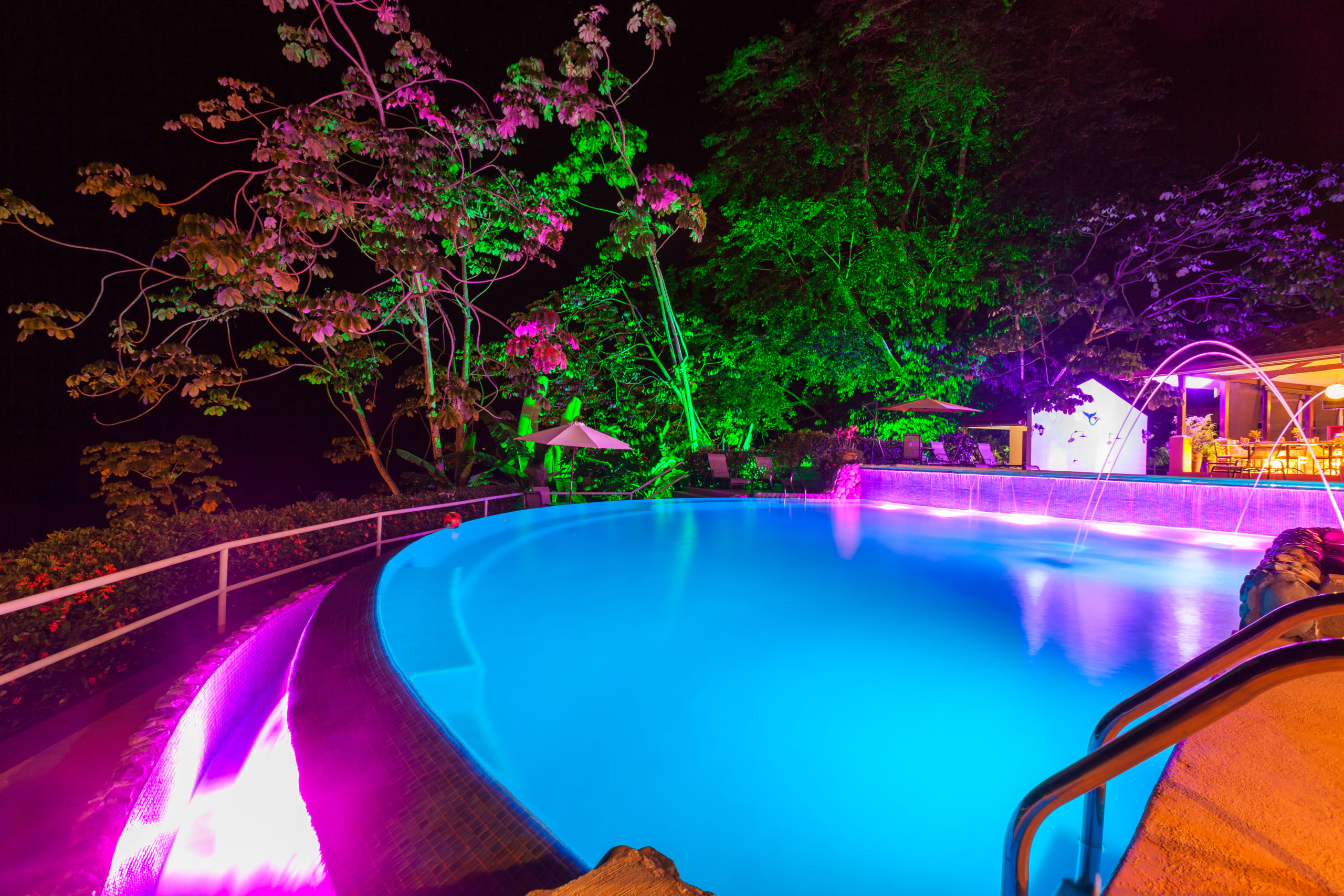
Practical Considerations for Choosing Pool Colors
You’ll need to consider factors like maintenance, temperature control, and aesthetics when choosing pool colors. It’s not just about what looks good – practicality plays a huge role too. Think about color durability, as some shades may fade quicker under harsh sunlight and frequent chemical treatments.
Darker colors absorb more heat which might be great for colder climates but can make the water uncomfortably warm in hotter regions. On the other hand, lighter hues reflect light keeping your pool cooler but they tend to show dirt and algae more easily. So, you’ve got a conundrum on your hands.
Safety implications should also be part of your decision-making process. Brighter pool colors provide high visibility which is crucial for monitoring kids or spotting potential hazards in the water. Darker shades might add an aesthetic appeal but can compromise safety by reducing underwater visibility.
You see, it’s not all about picking a pretty shade; there’s science and logic behind making a wise choice. Weigh out these considerations carefully before settling on a color for your pool because that decision will influence its utility and appeal long term.
Case Studies: Successful Use of Color in Pool Design
You’re about to dive into the fascinating realm of color choices in resort and residential pool designs.
We’ll explore how various hues can dramatically alter a pool’s overall aesthetic, and delve into the intriguing science behind color psychology in pools.
Resort Pool Color Choices
Resort pool color choices can significantly influence the overall aesthetic and ambiance of the facility. You’ve got to consider both color symbolism in resort pools and the cost effectiveness of pool color choices. The right hue can evoke certain emotions, enhancing guests’ experiences.
Blue symbolizes tranquility, making it a popular choice.
Green, though less common, signifies nature and serenity.
Black or dark colors are often used for luxury resorts for an infinity effect.
Lighter shades like white or beige reflect cleanliness and simplicity.
Bright tones such as yellow or red may be used sparingly to add fun elements.
Residential Pool Designs
When it comes to residential water features, there’s a wide variety of styles and themes that can transform your backyard into a personal oasis. Pool lighting effects are not just functional but can create an enchanting ambiance for your night swims or parties. Eco-friendly designs help you contribute to preserving the environment while enjoying luxury.
| Style | Lighting Effect | Eco-Friendly Factor |
| Classic | Subtle undertones | Solar-powered lights |
| Modern | Vibrant hues | Energy-efficient filters |
| Rustic | Warm tones | Natural stone materials |
| Tropical | Bright colors | Use of local plants |
You’re not merely choosing a design; you’re creating an experience that reflects your personality. Remember, your choices impact more than aesthetics – they affect the mood, energy usage, and environmental footprint of your personal retreat.
Color Psychology in Pools
Diving into the world of hues, it’s fascinating to see how different shades can influence your mood and enhance your swimming experience. The color symbolism in pools isn’t just a random selection; it’s a thoughtful process that reflects cultural influence on color choices.
Blue pools evoke feelings of tranquility and peace, ideal for relaxation.
Green pools, though less common, blend with nature for an organic feel.
White or light-colored pools are classic and timeless, reflecting cleanliness.
Darker shades like black create depth and mystery, offering a unique aesthetic.
Splashy colors such as red or yellow may be bold choices but they do add fun vibes.
So next time you’re choosing pool colors, remember each hue has its own story to tell. Your choice could literally set the mood!
Common Mistakes in Color Selection for Pools
It’s not uncommon for pool owners to make mistakes when selecting colors, often overlooking the importance of this design aspect. You may end up facing color maintenance challenges if you don’t consider factors such as the impact of sunlight and chemicals on your chosen hue.
One classic mistake is neglecting cultural color interpretations. What might look appealing to you may have a different connotation in another culture. A blue pool could signify calmness and serenity in one culture but symbolize sadness in another.
Here’s a handy table illustrating some common mistakes and their solutions:
| Common Mistake | Solution |
| Not considering sunlight and chemical effects | Use UV resistant paints, regular cleaning |
| Ignoring cultural color interpretations | Research on color meanings in targeted cultures |
Future Trends: Color in Pool Design
Looking ahead, we’re starting to see some exciting trends in the use of hues for aquatic areas. You’ll notice the play of color symbolism and seasonal influences in these trends.
1. Monochromatic Magic: Monochromatic schemes are gaining popularity. The water looks crystal clear against a single shade backdrop giving your pool a minimalist yet sophisticated look.
2. Nature-Inspired Tones: Earthy tones like blues and greens are making a comeback, influenced by nature’s own palette. These colors symbolize tranquility and harmony, enhancing your swimming experience.
3. Seasonally Adaptive Colors: Seasonal influences are playing an increasingly significant role in pool color choices. For instance, vibrant summer colors can be switched to subtler autumnal shades as seasons change.
4. Therapeutic Use of Color: Using color symbolism therapeutically is also trending; warm tones for relaxation or cool blue hues for refreshing dips.
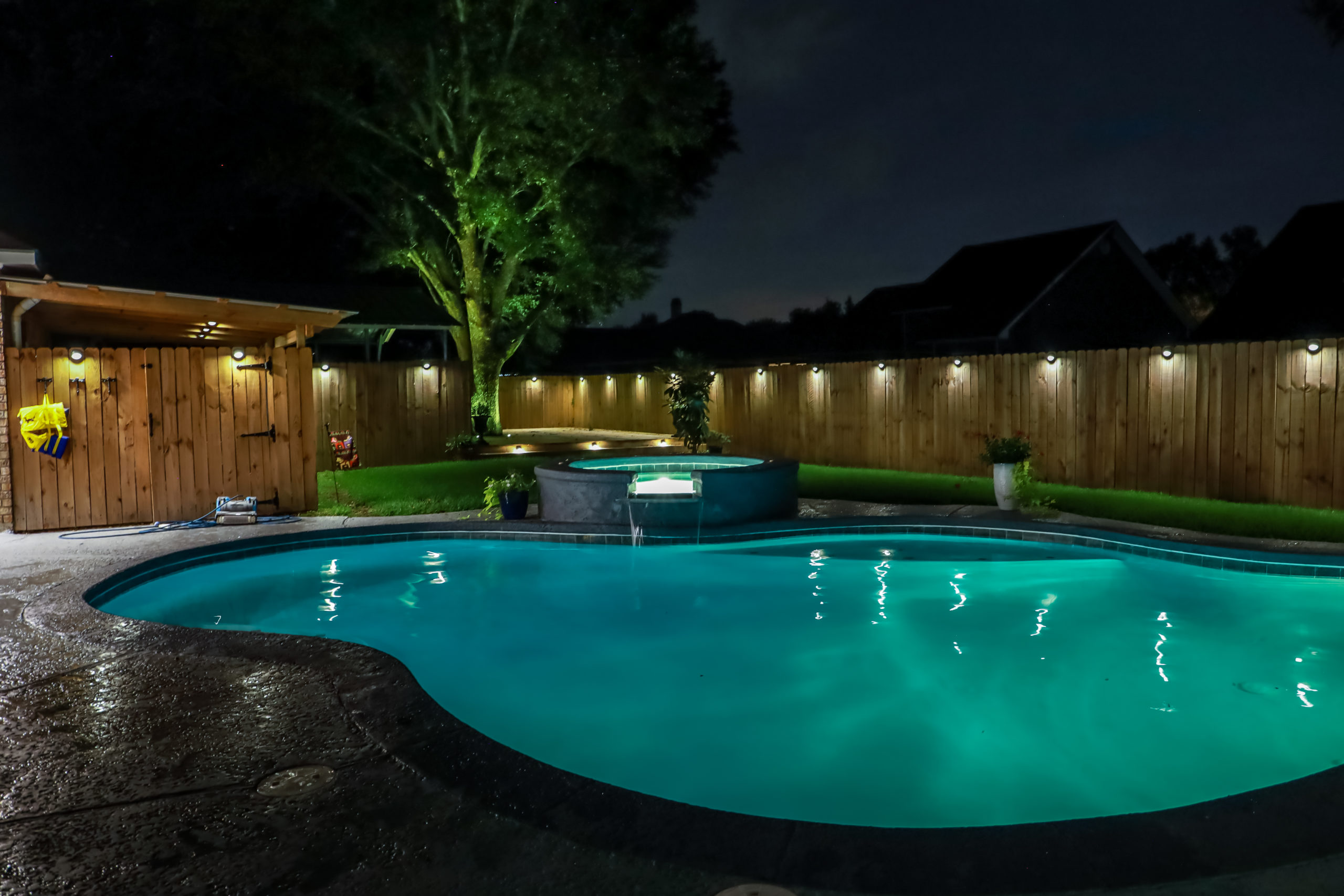
Frequently Asked Questions
Can Color Choices Impact the Maintenance and Cleaning of a Pool?
Yes, your color choices can impact pool maintenance and cleaning. Darker colors might hide dirt better, but they’ll also heat up quicker. It’s a balance between aesthetic appeal and practicality in color perception.
How Do Color Trends in Pool Design Impact the Resale Value of a Home?
Color trends in pool design can affect your home’s resale value. Understanding color psychology, you’ll see that well-chosen hues enhance pool aesthetics, making your property more appealing to potential buyers.
Are There Any Health and Safety Considerations Related to Pool Color?
Yes, there are. Color psychology suggests certain hues can affect mood and energy levels. Also, lighter pool colors have better reflective properties, enhancing visibility and making swimming safer for you and your family.
How Does the Color of a Pool Affect Its Temperature?
Sure, the color of your pool significantly affects its temperature. Darker colors absorb more heat, making the water warmer. Yet, it’s not just about practicality; color psychology and aesthetic appeal play key roles too.
Can the Color of a Pool Impact the Visibility and Clarity of the Water?
Absolutely, the color of a pool can impact water visibility. Color psychology in pool design plays a part. Darker colors may reduce clarity, while lighter ones enhance it. Lighting also significantly influences visibility.

